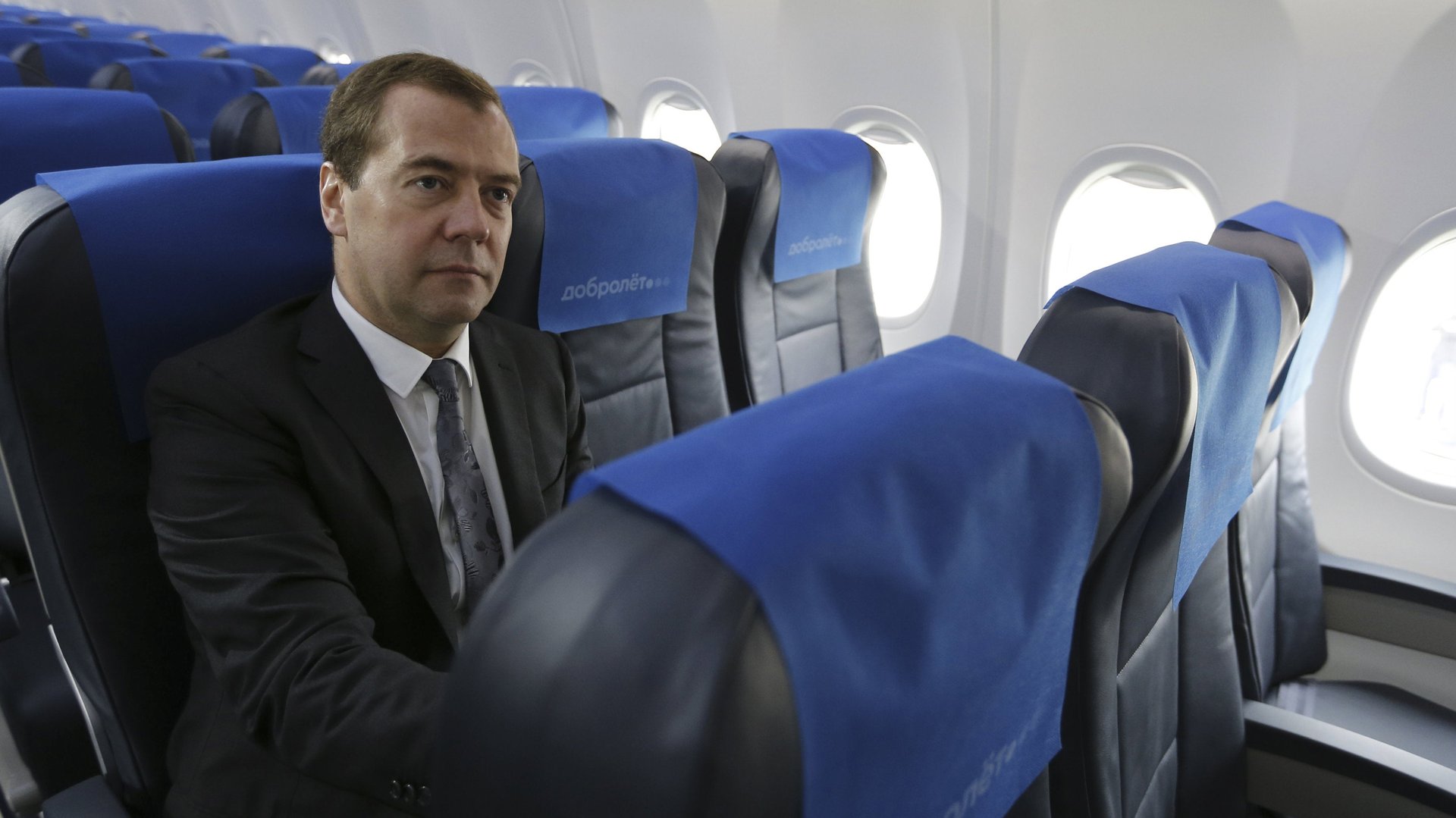Russia’s economic threats would do the most damage to… Russia
From restricting air travel to squeezing natural gas supplies, Russia has begun to level threats that could hurt its own economy far worse than the outside world.


From restricting air travel to squeezing natural gas supplies, Russia has begun to level threats that could hurt its own economy far worse than the outside world.
Prime minister Dmitry Medvedev has again threatened to cut off his country’s air space to western airlines is Europe proceeds with new sanctions. That was an escalation from a month ago, when he threatened only to cut off Siberian air space.
By one estimate, it would cost European airlines alone up to $200 million a year to fly around Russia en route to Asia. But tit-for-tat tactics can become expensive if carried to their logical extremes: Russia’s cost would be substantially higher when you add lost air transit fees ($170 million last year) and the price if the West retaliates by forcing Russian airlines to avoid Europe.
Meanwhile, Aeroflot has already suffered from the Russian invasion of Ukraine—its shares have plunged by 34% since the annexation of the Crimean peninsula on Feb. 27.
Moscow is also threatening to reduce (paywall) shipments of natural gas to Europe should it proceed with plans to re-export its own Russian supplies to Ukraine. Russia cut off gas to Ukraine in February in a price dispute. Ukraine says it has almost enough gas in storage to last the winter, and last week, Slovakia—a customer of Russia’s Gazprom—opened a pipeline to Ukraine, to help make up the rest of Kyiv’s needs. Poland and Hungary may re-export Gazprom gas to Ukraine as well.
If Russia carries through with its threat, it would be going up against a Europe that is already steeled for a cutoff. EU gas storage facilities are between 89% and 92% full. That does not mean that Europe is impervious to a gas cutoff this winter, but it does suggest that it is far less vulnerable than Russia’s previous such moves in 2006 and 2009.
And how is Gazprom itself doing? Not so well. As we’ve written, its profits plunged 38% in the first half of the year. Its shares trade near the lowest among its major emerging market peers. Gazprom, which sends 75% of its exports to Europe, would suffer a body blow if a cutoff to Europe is sustained. That would hurt the Russian budget as well: Gazprom provides about 5% of the government’s income.
Then there is oil: Another 45% of Russia’s budget comes from oil exports, the biggest source of which is state-controlled Rosneft. And Rosneft is also in long-range trouble. Western sanctions to date—constraining Rosneft’s access to financing and advanced oilfield technology—have clamped the company in a cash squeeze. It still churns out billions of dollars a year, but it also has about $55 billion in debt on its books, plus steep bills for Arctic and Siberian drilling projects that it hopes will boost its annual oil production by a third—to 6.4 million barrels a day—by 2020.
Last month, Rosneft had to go to the Russian government to ask for $42 billion to tide it over. It cannot rely fully on its oil sales because it has already pledged 800,000 barrels of daily production—16% of its approximately 5 million barrels—to China and Swiss-based trading companies in exchange for cash, Bernstein’s Teng Ben tells Quartz.
In the case of China National Petroleum Corp., that oil has to be delivered for the next 25 years; for Vitol and Glencore, the debt goes on for just five years. But, when Rosneft returned (paywall) for $2 billion more in cash a couple of weeks ago, Vitol said no because of the sanctions.